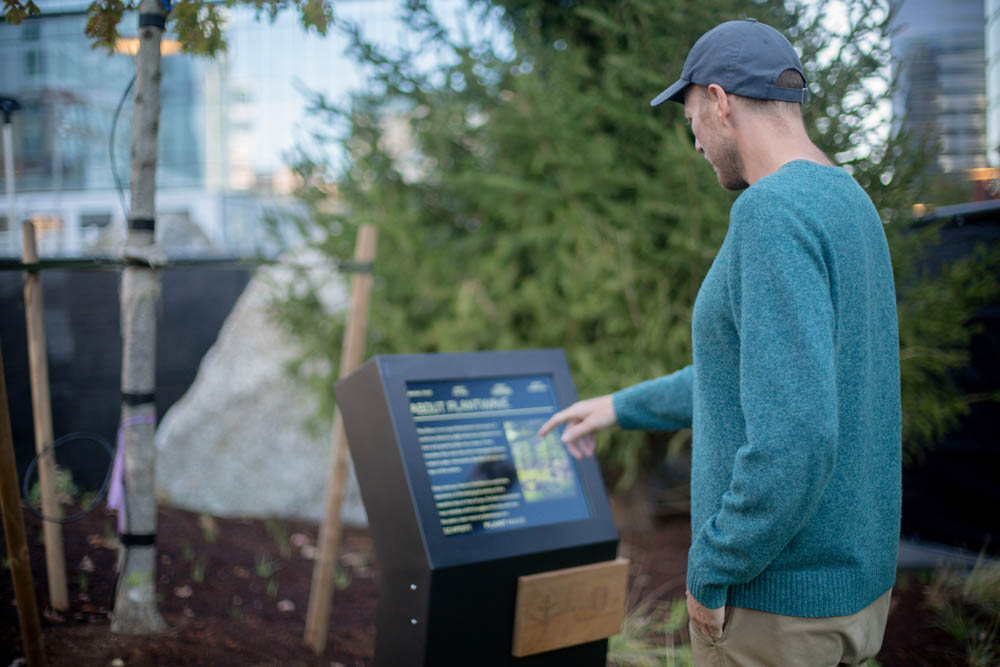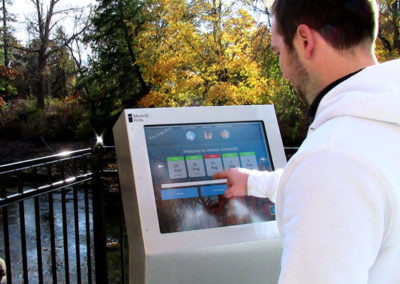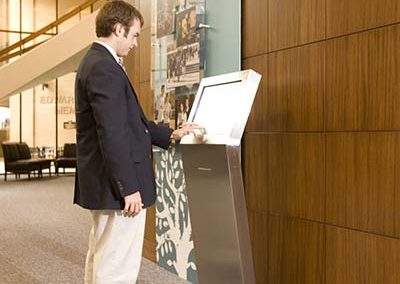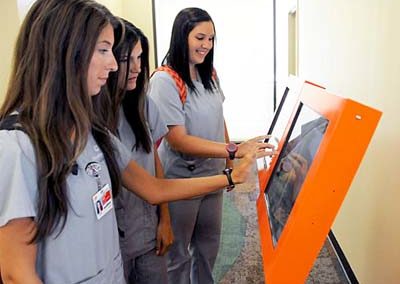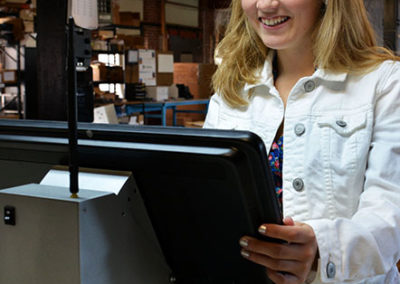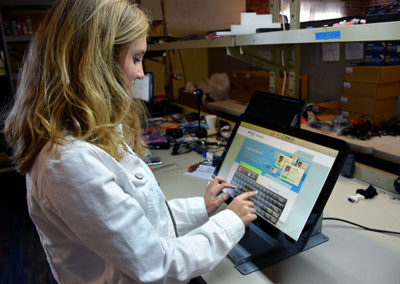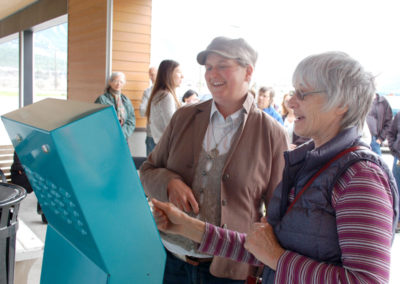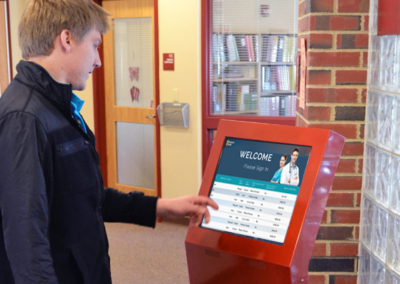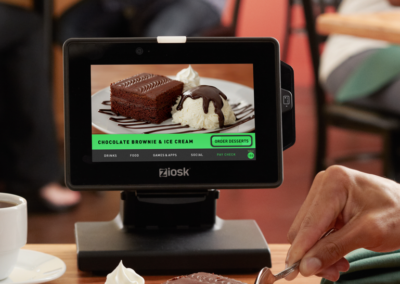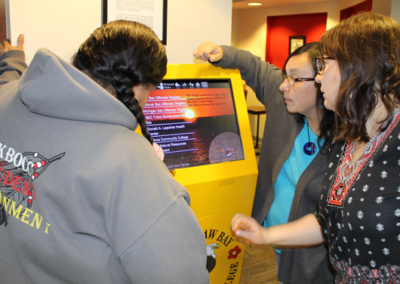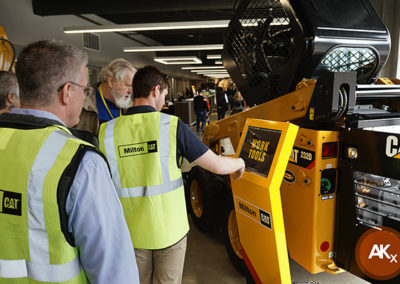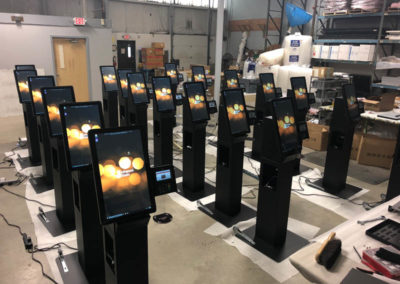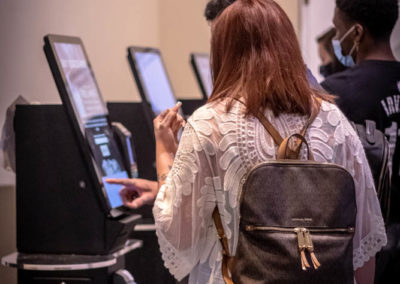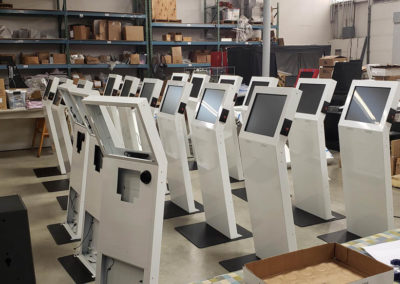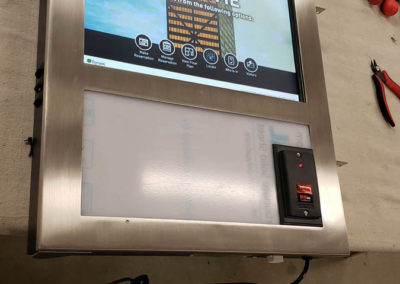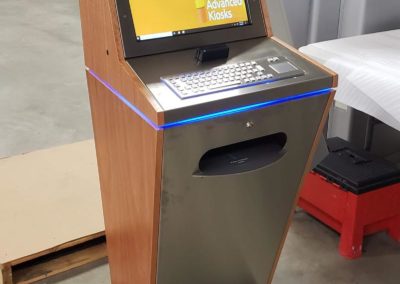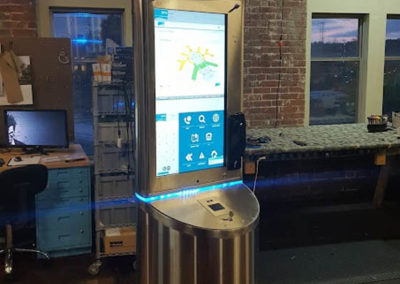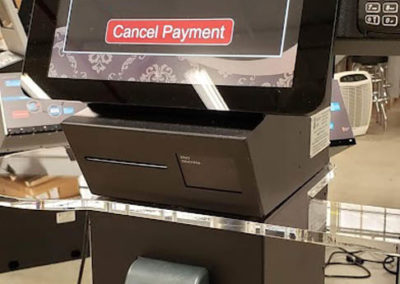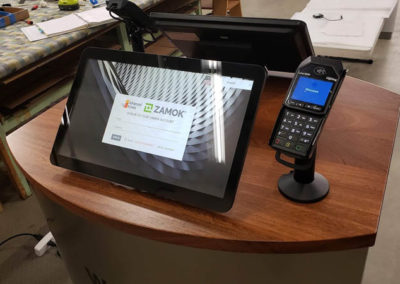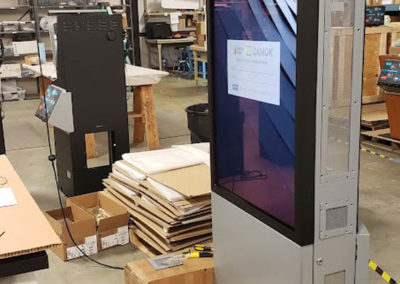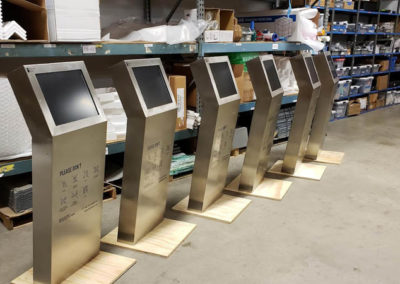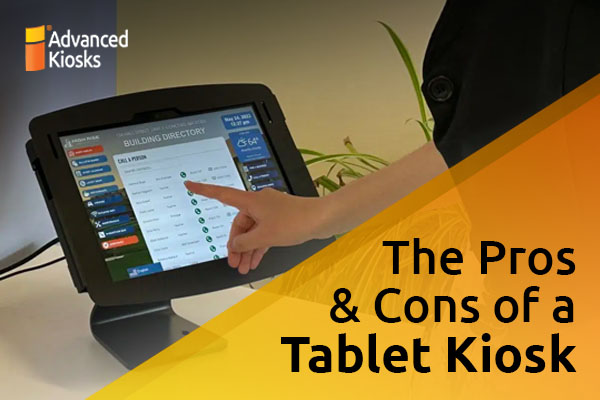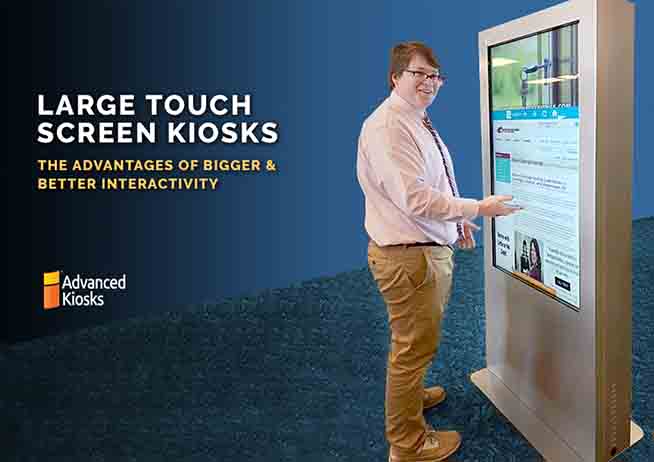Touchscreen Kiosks
Touchscreens & Digital Technology
Touch Screen kiosks have revolutionized how businesses and organizations interact with their customers, offering intuitive, self-service solutions for a wide range of applications. At Advanced Kiosks, we prioritize using the best touchscreen technology to ensure our kiosks deliver exceptional performance, durability, and user satisfaction.
Explore how touchscreen kiosks can enhance your operations and why choosing the right components is essential for your self-service applications.
Touchscreen Display Kiosk Technology
Understanding the key components of a touchscreen kiosk helps ensure you choose the right solution for your business:
- Touchscreen Technology: The glass touchscreen is bonded to a high-performance monitor for precise touch response and durability.
- LCD Monitor: Commercial-grade monitors ensure sharp visuals, long lifespan, and reliable performance.
Benefits of Using Commercial-Grade Monitors
All touchscreen kiosks from Advanced Kiosks use commercial-grade monitors that are specifically designed for high-traffic environments. Key benefits of digital kiosks include:
Durability: Designed for 24/7 use with longer lifespans.
Warranty: Comes with a 1-3 year warranty for peace of mind.
Superior Display Quality: Enhanced detail, color accuracy, and sharpness.
Touchscreen Kiosk Features and Options
Advanced Kiosks offers a variety of customizable features to tailor your touchscreen kiosk to your specific needs:
Privacy Filters: Ideal for protecting sensitive user data, privacy filters shield screen content from side glances.
Sunlight-Readable Displays: Designed for outdoor use, these monitors ensure visibility even in direct sunlight by emitting up to 1100 nits of brightness.
Multi-Touch Capability: All Advanced Kiosks models support up to 10 points of contact, enabling seamless interaction for multiple users or complex tasks.
Custom Sizes and Orientation: Whether you need a compact design or a large, interactive display, we offer sizes to suit every application.
Why Choose Advanced Kiosks for Your Touchscreen Kiosks?
Advanced Kiosks provides industry-leading touchscreen kiosks equipped with state-of-the-art technology and tailored solutions for your unique needs.
Here’s why businesses trust us:
Expert Engineering: Decades of experience in designing durable, reliable kiosks.
Custom Solutions: We collaborate with you to create the perfect touchscreen kiosk for your goals.
Comprehensive Warranty: Enjoy peace of mind with our three-year commercial-grade warranty.
Applications of Touchscreen Kiosks
Touchscreen kiosks can be adapted for numerous self-service applications, including:
Retail: Self-checkout and information kiosks.
Healthcare: Patient check-in and health information kiosks.
Hospitality: Hotel check-in and concierge services.
Government: Wayfinding and information kiosks for public spaces.
Get Started with Your Touchscreen Kiosk Today
